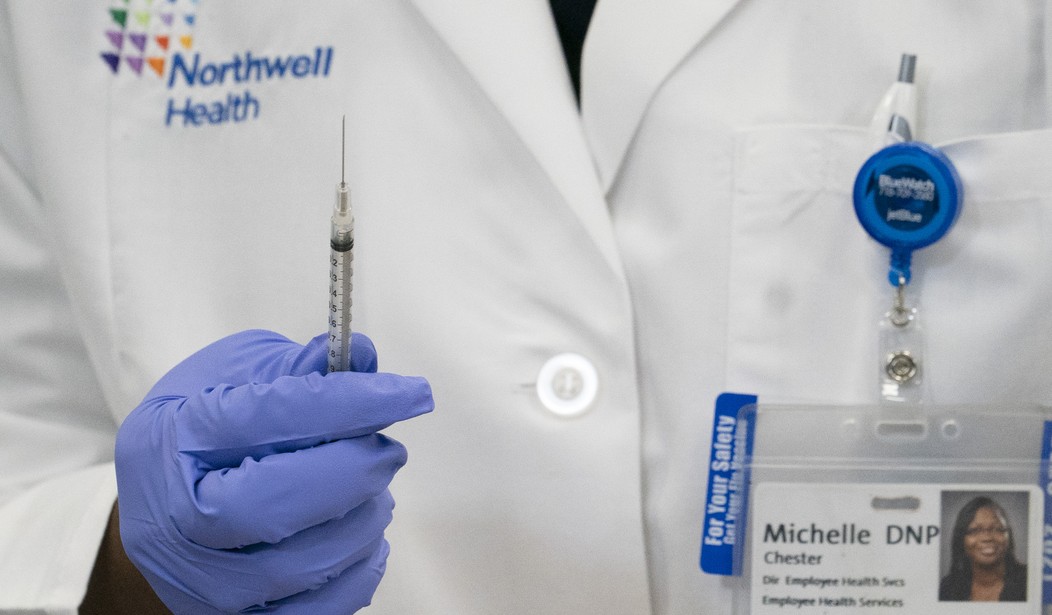These days, everyone’s searching for enlightenment.
That includes the world’s medical establishments.
If you’re going to be a doctor in the modern era, you’ve got to choose your words wisely.
Therefore, Columbia University’s Vagelos College of Physicians and Surgeons has issued “Guidelines for Promoting an Anti-Bias and Inclusive Curriculum.”
On its website, the medical school explains that “inclusion is a value,” and its directives for teachers are meant to battle “bias which [decreases an] ability to provide equitable medical care.”
Also at the mission’s forefront: to “increase inclusion” and “combat systemic racism.”
Apropos of that, the guide 86’s the label “Oriental” — it’s “outdated and imprecise.”
And if someone’s a diabetic, don’t call them such; they’re a “person with diabetes.”
Similarly, use the “person-first” descriptor “person with schizophrenia” rather than the less humanity-affirming “schizophrenic.”
And have you ever been told you have healthy pink gums?
Gong:
Be inclusive in representations of healthy/“normal.”
Example: A textbook may describe healthy gums as being “coral pink” in color, when in fact healthy gums of persons of color may be pigmented.”
As for making relationship references, the manual says most textbook examples are limited to heterosexual couples.
“Such a limited description,” it explains, “inadequately prepares students to work with diverse patients and risks inadvertently communicating to some students that they are not ‘normal.’”
And where sexually transmitted infections are concerned, the handbook advises against using “typical” case examples involving “men who have sex with men or young people.”
This shortcut may inadvertently lead students to think that these are the only kinds of persons who are at risk for STIs.
Better:
Consider discussion of a geriatric person with an STI…
Now let’s get into the weeds…
The medical literature now describes many examples of health disparities by race, socioeconomic status, and other variables. However, the mediators of those disparities are not always known and, if known, are not always discussed. This may leave some students with a misguided impression that genetic or biological differences drive such disparities.
“Conversations that focus on the structural reasons for health outcomes,” it continues, “may help students move from the misguided notion that genetic/biological differences between ‘races’ drive such health disparities” rather than things such as “structural racism.”
And speaking of race, in case you didn’t know, it doesn’t exist.
A sizable section is titled “The Social Construction of Race.”
A key principle that informs our approach to promoting an anti-bias, anti-racist, and inclusive curriculum is that race is a social construct (in contrast to biologic phenomena such as skin pigmentation). Racial categories (i.e., “black” or “white”) reflect social conventions rather than meaningful biological distinctions.
More on myths:
The Social Dimensions of Gender
For example, of two people who identify as women, one may carry a Y chromosome while the other does not; one may have a uterus or ovaries or breasts or a penis while the other does not.
Hence, important information on “precise gender-related language”:
(Use) “people with uteruses” instead of “women” if the relevant point is about the presence of a uterus rather than the person’s expressed gender identity.
Columbia’s updates are well and good, but it may be playing catch-up to the UK’s Sussex and Brighton University Hospitals NHS Trust.
In February, I covered their aim to be inclusive of the birth-giving nonbinary.
Designations to nix: “breast milk” and “father.”
Preferable:
- “breast/chest milk”
- “human milk”
- “milk from the feeding mother or parent”
Today we are launching the UK’s first clinical and language guidelines supporting trans and non-binary birthing people.
Follow us as we post throughout the week.
Find out more on our webpage
➡️ https://t.co/EPaesy4RWN#transpregnancy #nonbinarypregnancy #genderinclusion pic.twitter.com/qgzhJ2e6On— Brighton and Sussex Maternity (@BSUH_maternity) February 8, 2021
And you’ve likely heard that Biden’s new budget removed “mothers” in favor of “birthing people.”
RedState’s Kira Davis was unimpressed:
ICYMI: I Am Not a 'Birthing Person.' I Have Earned This Womanly Form and You Will Respect It https://t.co/QT4f4L6Vj6
— Kira (@RealKiraDavis) June 12, 2021
Back to Columbia, they’re trying to clean up the mess of the last many years’ use of wrongful and harmful syllables.
And just in case you thought it was only for the marginalized:
[Eliminate] the use of outdated and imprecise terms, e.g….“Caucasian” to describe a white person.
Our superiorly sensitive doctors have a whole lot to keep in mind.
Amid all the considerations of language, hopefully they’ll still remember to give you the right medicine and not operate on the wrong ovary.
But if they forget, hopefully, you weren’t called a Caucasian woman diabetic along the way.
-ALEX
See more pieces from me:
New York Law School Announces New Race Focus and Required Courses on Systemic Racism
Bill Maher Fillets the Young and Woke Over White Power Reaching a Record High
High School Marks Prom Attendees Who Haven’t Been Vaccinated, Critics Compare to Nazi Germany
Find all my RedState work here.
Thank you for reading! Please sound off in the Comments section below.













Join the conversation as a VIP Member